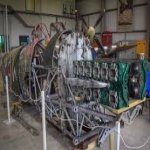The US military kept detailed stats on the causes of wounds in Afghanistan. Of course, the vast majority of casualties were from IED's, but a strange pattern emerged when they analyzed the gunshot casualties.
Although the overwhelming majority of gunfights (something like 95%) were against insurgents with AK's or similar intermediate calibre carbines, nearly half the actual gunshot wounds were from full powered rifles, sustained in engagements with "snipers" - who were generally using iron sight old WWII era battle rifles - mostly Mosin 91/30's and Lee Enfields - for various reasons, Mausers were never really seen in significant numbers.
It followed a very predictable pattern. The "snipers" would set up 300-400 yards off, and start taking pot-shots, pinning down the Americans, while the Americans tried to figure where the shots were coming from. Within 10-15 rounds, the "sniper" would either actually hit something, or fade off into the desert.
At those distances, the ambush sniper is at a distinct advantage for a number of reasons. Past 200 yards, it becomes incredibly difficult to figure out where the incoming fire is coming from, at least precisely. "That large cluster of trees" is not an aiming point for a rifleman. The carrying power and accuracy of a WWII bolt gun will beat the pants off that of an M4 at 300 yards, and the margin is even wider at 400 yards. And the sound... If you've ever sat in the butts at a target range, raising and lowering the cards, the sound a full powered round whipping overhead, a solid, gut churning, "Crrr-ACK!" is much more fear inducing than the "sss-whack!" of a 5.56 round (it's really hard to describe, but the sound of those full powered .30 cal rounds... you can
feel it).
Good NYT embed video:













































































